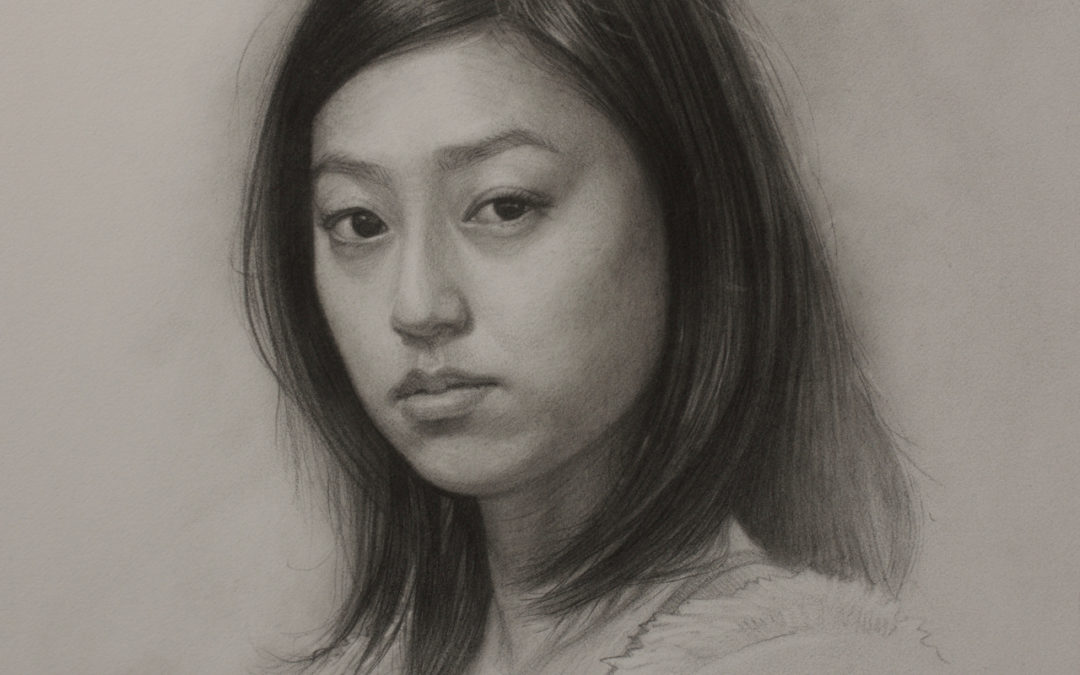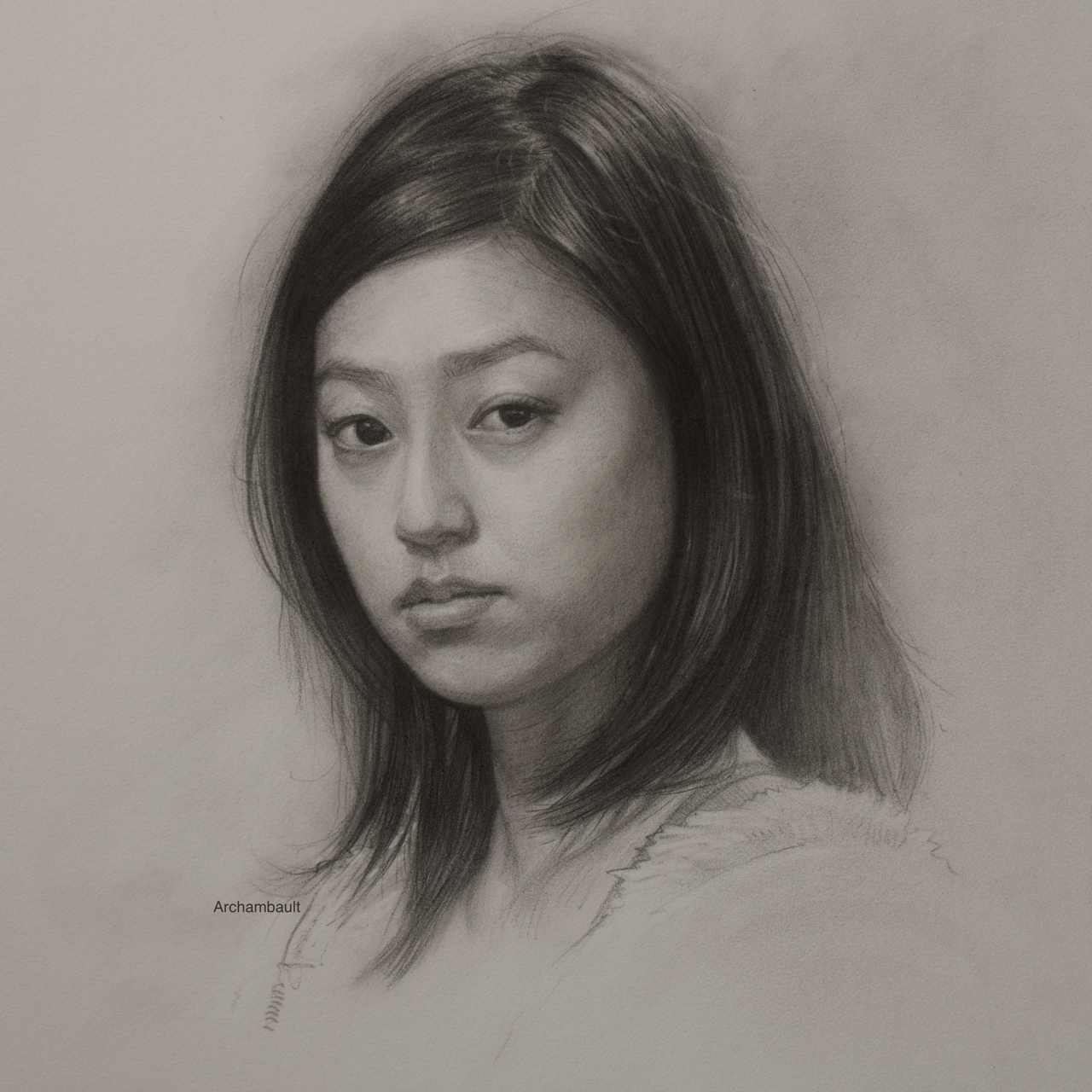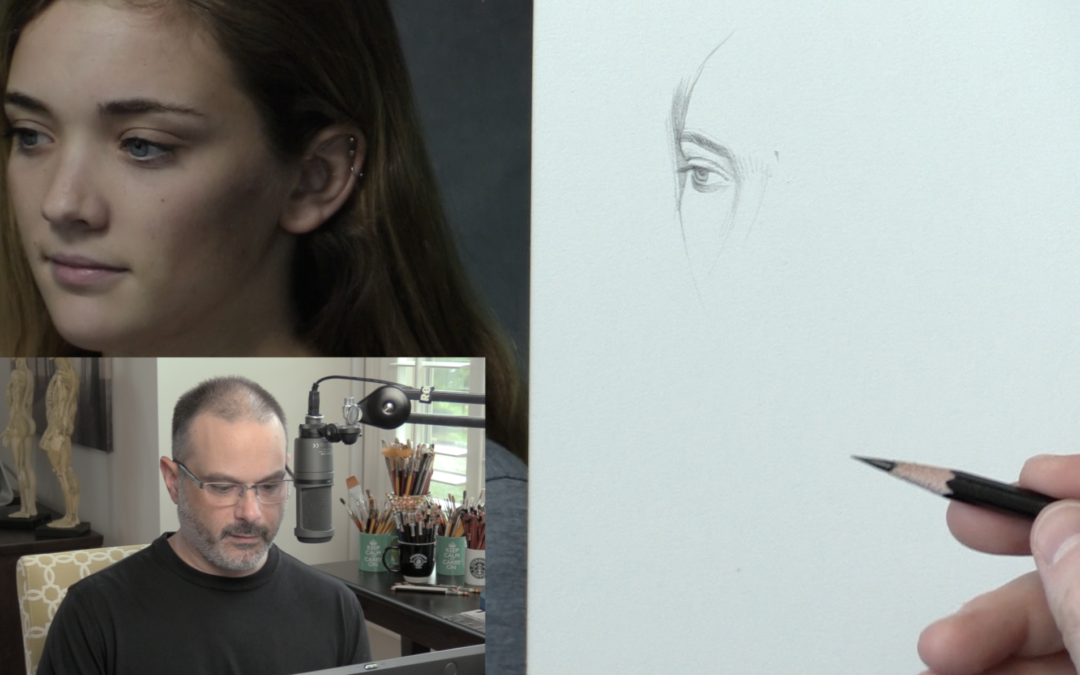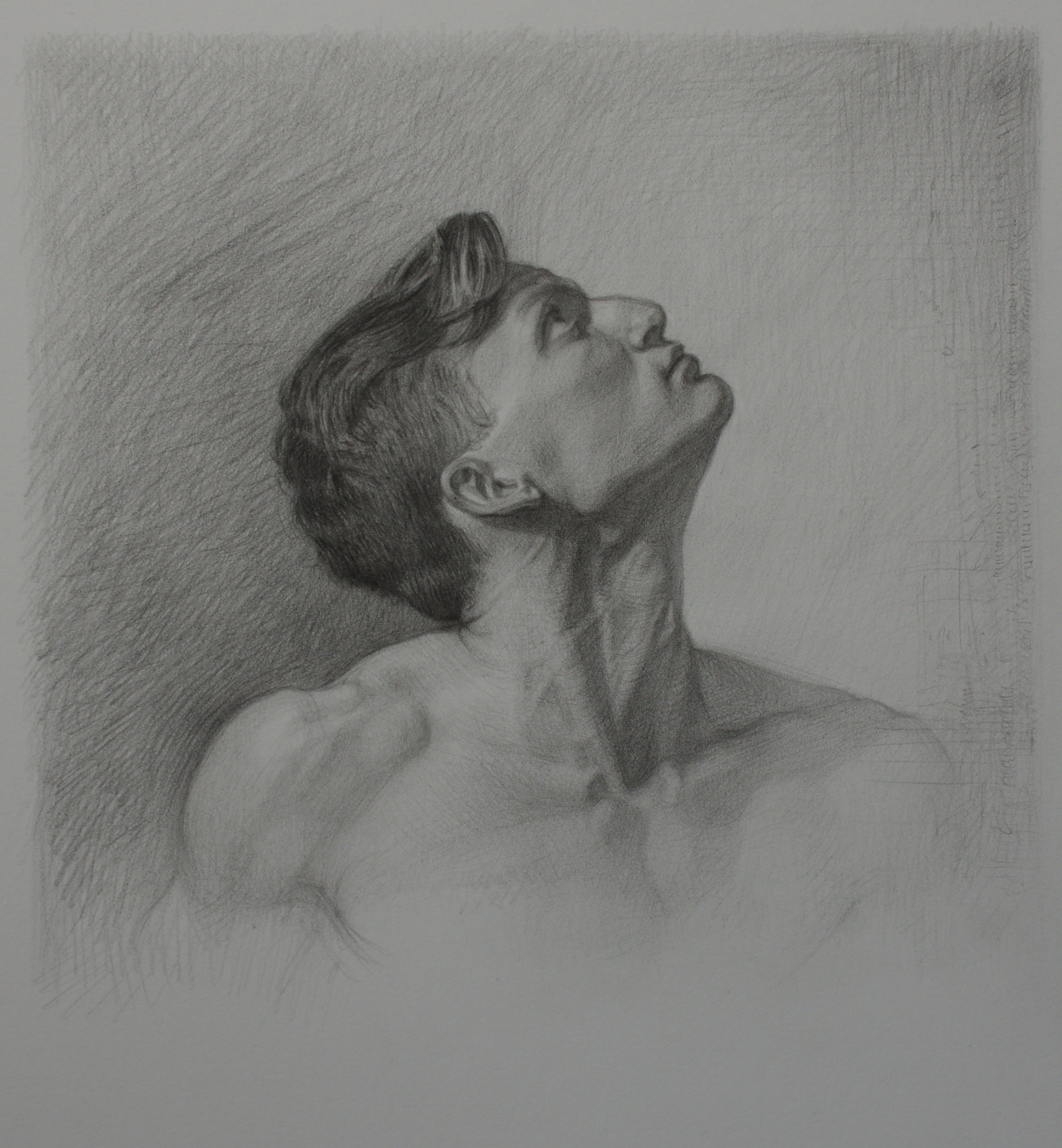
How To Draw Soft Hair
I just recently finished up a new portrait drawing course. I wanted to share with you a technique for drawing soft hair.
You want to work in layers. Your first layer in terms of drawing hair is to block in tone. Don’t try to put in your darkest dark all at one time. You’ll want to gradually lay in tone.
With the technique shown in the video, I put down tone, then pushed the tone into the paper with a stiff bristle brush. What this does in push the pencil into the texture of the illustration board.
You will want to do this process a few times. Blocking in tone, using the brush to push it into the board. In the final layers that is where you will refine the details with both an eraser and your pencil.
When working on the final layers you should use a more pliable brush. One that is more forgiving. You can then proceed to pull out the light with a thin eraser. With this drawing, I used a mono-zero cylindrical eraser.
When you use the bristle brush, not a blending stump, you can easily pull out lights with your eraser. Try it it’s a ton of fun.
Let me know what you thought about this technique. Leave a comment below.









